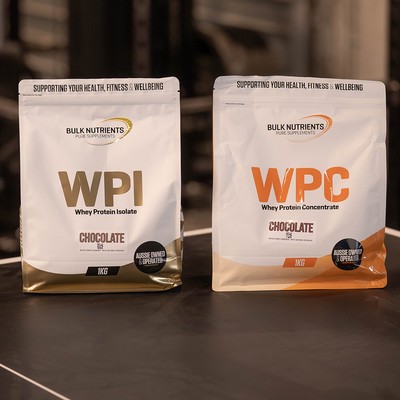The Benefits of Quitting Smoking

The fundamentals of smoking
Smoking has been around for millennia encompassing both Eastern and Western civilisations since about the 9th century when tobacco was smoked using reeds and smoking tubes. Roll the camera forward to the 21st century and we now have every type of smoking instrument known to man and the cost of tobacco is reasonably inexpensive.
However, over the last 10 years, the cost of tobacco products has increased but smoking is still highly prevalent in society. An online report by the World Health Organization published on the 24th of May 2022 indicates there are currently approximately 1.8 billion people around the world using tobacco with the majority of these (80%) living in lowto middle-income earning countries.
So, where does tobacco come from?
Tobacco comes from drying the leaves of a tobacco plant which has been previously used as the sole or main ingredient of smoking. The main chemical in tobacco is nicotine.
Nicotine is a toxic, highly addictive, stimulant chemical. A stimulant accelerates your nervous system and speeds up the electrical signalling of messages between your brain and the rest of your body.
There are many different types of chemicals (legal and illegal) that are classified as stimulants, and nicotine is only one of many.
In contrast - some stimulant drugs are used (when medically indicated) for conditions such as attention deficit hyperactive disorder or narcolepsy. But for the purpose of this article, we will maintain the context of smoking and the benefits of quitting smoking.

Smoking’s effect on your health
Smoking doesn’t just directly affect those inhaling the smoke, it can affect bystanders who passively smoke vs the actual smoker who is actively smoking.
Passive smokers (those that are nearby) are also affected and the smoke can be harmful to them too. There can be more than 7000 different chemicals in tobacco smoke and at least 250 of these are recognised as harmful including hydrogen cyanide, carbon monoxide (you also get this from the exhaust of your car), and ammonia (commonly used as a cleaning product).
Of the aforementioned 250 harmful chemicals, 69 of these have been known to cause cancer.
Click on this link here where the National Cancer Institute names a few.
Before getting ahead of ourselves let us pause a moment… key word here is cause… not correlate… but cause.
In statistics, a correlation does not automatically equal causation. However, causation indicates that one event is the result of the occurrence of the other event. E.g., In this instance - 69 of the chemicals in tobacco smoke cause cancer.
The body is an amazingly complex system yet very efficient. It has the ability to transport the chemicals from smoke around the body quite easily. Smoking affects your body by directly entering the lungs then being dispersed to essentially every organ in the body. You don’t even have to inhale the smoke into your lungs to cause damage - even if the smoke enters your mouth, it can cause damage to the lining of the mouth. This is before nicotine even enters your bloodstream.

Let’s now talk about nicotine in a bit more depth
How nicotine works in the brain is that it binds to nicotinic receptors, augmenting the release of numerous neurotransmitters, including dopamine, serotonin, norepinephrine, acetylcholine, gamma-aminobutyric acid, and glutamate (Quattrocki et al., 2000).
Let’s discuss the effects of just one of these neurotransmitters - Dopamine. Dopamine is commonly referred to as the ‘feel good’ chemical. Dopamine gives an individual the feeling of being happy, improves concentration, and provides a sense of increased energy levels.
If a person smokes (and/or ingests) nicotine-containing products, dopamine is released. Smoke more, more dopamine is released. Smoke some more… you get the idea.
So, what happens when a person stops smoking or there’s an extended period between nicotine ingestion?
The effect of dopamine wears off. This is the result of nicotine levels diminishing. Therefore, to remedy this, your intuitive brain craves more dopamine. So how is that achieved - having another cigarette is typically the solution.
This biological reaction goes round-and-round. Keep in mind - I am absolutely not advocating for smoking more as the solution to remedy your dopamine fix. The longer you have been smoking, the more dopamine you need to feel good. As a result, an individual can become dependent on nicotine.Nicotine dependence is when withdrawals are likely to occur if the remedy (nicotine) is not met. People may experience withdrawals differently, however often withdrawals result in feelings of nervousness, restlessness, irritability, and increased feelings of anxiety.
Below is a summary of different chemicals (including already mentioned nicotine) and the effects these chemicals have on your body (Australian Department of Health, 2020).
| Chemical | Effect on biological systems |
|---|---|
| Nicotine | Narrows your veins and arteries. This can lead to decreased blood flow and decreased oxygen carrying capacity to peripheral limbs including hands and feet. Now imagine combining narrow veins and arteries as a result of nicotine ingestion with something like ongoing (chronic) high cholesterol which may also block your arteries. Having blocked arteries can lead to poor heart health and may lead to Coronary Heart Disease (CHD). Smoking has been shown to be a risk factor for CHD, however, a single cause of CHD is yet to be identified (Health Direct, 2020). Other risk factors of CHD include how often you exercise, social isolation, and being overweight or obese. Additionally, a report published by the Australian Institute of Health and Welfare (2021) indicated that CHD was the most common cause of death in Australia for males in 2019. |
| Carbon monoxide (CO) | Deprives your heart of oxygen. As a result, you have decreased systemic oxygenation. Additionally, airways become inflamed and expand (due to the CO exposure) decreasing the amount of air that reaches your lungs. |
| Tar | A sticky substance that coats the airways of your lungs. Similar to that of soot in a chimney or what you might find in an air vent above a stove. |
| Phenol (carbolic acid) | Paralyses the cilia (hair-like projections) in your airways. These little structures are responsible for sweeping your airways clean and protecting them from infections. |
| Tiny particles | Lead to the notorious ‘smokers cough’. The smoke contains irritants which triggers a coughing response. This response leads to increased mucous production and can damage the lung tissue. |
| Ammonia and formaldehyde | Again, our cleaning product ammonia. Formaldehyde is also used as an industrial fungicide, germicide, and disinfectant. Both ammonia and formaldehyde are irritants to the eyes, nose, and throat. |
| Cancer-causing chemicals | Increase rate of cell growth or produce abnormal cells. May lead to cancer cells. This isn’t even considering the different types of cancer or metastasis. |

Hospital presentations for surgery
Both smoking-associated lung disease and smoking in general, can have a post-operative influence on your recovery. For example, if you ever needed to get surgery that required you to be put ‘under’ general anaesthetic for an acute infective exacerbation of chronic obstructive pulmonary disease or any other type of invasive cardiothoracic surgery. The aforementioned has been associated with what medical professionals’ term post-operative pulmonary complications as reported by Dr Thomas from the Royal Brisbane and Women’s Hospital. These can include occurrences such as pneumonia, atelectasis, bronchospasm, or prolonged ventilation. Smoking-associated lung disease and smoking itself are also associated with high post-operative mortality. Additionally, smokers have been reported to have higher levels of complications related to wound healing.

Once smoking cessation occurs
In my opinion this is the best section of information in this article. The following information may be a nice way for you or someone you know who smokes to reverse engineer their approach to smoking cessation if they can see some sort of finish line (health outcome).
Sound interesting? Cool - let’s keep going.
The following chronological order of physiological events has been published by Dr Peter Thomas, a Physiotherapy Consultant from the Department of Physiotherapy at the Royal Brisbane Women’s Hospital in Brisbane, Australia.
- Within 20 minutes after quitting smoking a person’s heart rate and blood pressure begin drop. A normal heart from is roughly between 60-100 beats/minute and normal blood pressure is usually 120 (systolic)/80 (diastolic). Systolic pressure relates to the pressure caused by your heart contracting and pushes blood out and diastolic is the pressure caused when the muscle relaxes and fills with blood.
- 12 hours after quitting the carbon monoxide level in blood drops to normal.
- After two to three months from quitting smoking circulation improves.
- One to nine months after quitting smoking - coughing and shortness of breath decrease. Cilia (those little finger-like hair projections I mentioned earlier) start to regain normal function in your lungs. Mucus clearance improves and reduces the risk of infection.
- One year after quitting the excess risk of coronary heart disease (CHD) is half that of someone who still smokes.
a. In Australia, in 2018 there was about 580,000 people living with CHD. At the time (2018) that was about 2.4% of the Australian population, for perspective (Australian Bureau of Statistics, 2018, Heart Foundation, 2018). - Let’s continue… five years after quitting smoking the risk of cancers of the mouth, throat, oesophagus, and bladder is cut in half and cervical cancer risk falls to that of a non-smoker.
- After two to ten years of smoking cessation the risk of stroke can fall to that of a non-smoker.
- Ten years after quitting the risk of dying from lung cancer is about half that of a person who is still smoking and the risk of cancer of the larynx and pancreas decreases.
- 15 years after quitting, the risk of coronary heart disease is that of a non-smoker.
Quitting smoking does not restore complete and full lung function but will slow the rate of further decline to parallel that of non-smokers. Smoking cessation is important to preserve remaining lung function even if substantial airflow limitation is present.

Help for you or a smoker you know
There are a variety of ways to quit smoking. Some of these include: cold turkey (‘straight-up’ stopping/ceasing/immediately refraining from smoking), tapering down quantity, nicotine replacement therapy, prescription medicines, mobile applications, support services, e-cigarettes, hypnotherapy, and acupuncture.
In the last 5 years there has been a lot of high quality evidence supporting some of the aforementioned cessation interventions. One of these studies includes the efficacy of combined therapies of medicines that are available – which have been found to be the most clinically effective, safe, and cost effective as a treatment strategy for quitting smoking.
There is also some high-quality evidence that individually delivered smoking cessation counselling can assist smokers to quit. This may be via engaging with a general practitioner, counsellor, psychologist, and/or community pharmacist to name a few.
There is moderate-quality evidence of a smaller relative benefit when counselling is used in addition to pharmacotherapy, and of more intensive counselling compared to a brief counselling intervention. Evidence to support these statements can be found here.
Additionally, there is further supporting evidence indicating that behavioural support for smoking cessation can increase quit rates at six months or longer, with no evidence showing increases in concurrent harm caused.
Moreover, in the context of younger populations, behavioural interventions may reduce the likelihood of smoking initiation in non-smoking children and adolescents.
In the context of pregnancy there is evidence that discusses some positive outcomes for cessation in both non-pregnant and pregnant populations of study participants. Strong evidence exists for both individual and combination approaches to treatment including pharmacologic and behavioural interventions.
These have been shown to be effective in increasing smoking cessation in non-pregnant adults. There is evidence to support behavioural interventions during pregnancy as being supportive means, however, data is limited on the use of pharmacotherapy.
In the future there may be some evidence analysing pharmacologic intervention in pregnancy populations and potential associated benefits, however this firstly needs to be substantiated through rigours studies before any recommendation can be made - which this article won’t be covering at this stage.
Since the creation of the first device closely resembling the modern e-cigarette in the 1960s a variety of publications have become available assessing the efficacy of e-cigarettes as possible cessation tools from traditional tobacco smoking. A variety of randomised control trials indicated that when people were provided with free e-cigarettes as a therapeutic intervention there was an associated increase in smoking cessation. Aka - more people stopped smoking.
However, another studying looking into e-cigarette found that e-cigarette use was associated with greater risk for subsequent cigarette smoking initiation and past 30-day cigarette smoking. These researchers have stated that strong e-cigarette regulation could potentially curb use among youth and possibly limit the future population-level burden of cigarette smoking.
I sincerely hope that the information provided above has been of benefit to you and that you found it interesting. To summarise, there are no health benefits to smoking and there are many support networks [likely in] your immediate community and online to assist you in quitting smoking and improving your health within the first 20 minutes of smoking cessation.

Max Cuneo is a physiotherapist, nutritionist and sports trainer with a passion for health and wellbeing. He has competed in many sports including sailing and bodybuilding, and is working towards his Masters in Public Health.
More about Max CuneoReferences:
- Australian Bureau of Statistics. 2018. National health survey: first results [Online]. Available: https://www.abs.gov.au/statistics/health/health-conditions-and-risks/chronic-obstructive-pulmonary-disease/latest-release [Accessed].
- Australian Department of Health. 2020. Smoking and tobacco [Online]. Australian Government. Available: https://www.health.gov.au/topics/smoking-vaping-and-tobacco/about-smoking/effects [Accessed].
- Australian Institute of Health and Welfare. 2021. Deaths in Australia [Online]. Available: https://www.aihw.gov.au/reports/life-expectancy-deaths/deaths-in-australia/contents/leading-causes-of-death [Accessed].
- Hartmann-Boyce, J., Livingstone-Banks, J., Ordóñez-Mena, J. M., Fanshawe, T. R., Lindson, N., Freeman, S. C., Sutton, A. J., Theodoulou, A. & Aveyard, P. 2021. Behavioural interventions for smoking cessation: an overview and network meta-analysis. Cochrane Database of Systematic Reviews, 1, Cd013229.
- Health Direct. 2020. Coronary heart disease and atherosclerosis [Online]. Available: https://www.healthdirect.gov.au/coronary-heart-disease-and-atherosclerosis [Accessed].
- Heart Foundation. 2018. Key statistics: coronary heart disease [Online]. Available: https://www.heartfoundation.org.au/activities-finding-or-opinion/coronary-heart-disease-key-stats [Accessed].
- Lancaster, T. & Stead, L. F. 2017. Individual behavioural counselling for smoking cessation. Cochrane Database of Systematic Reviews, 3, Cd001292.
- National Cancer Institute. 2017. Harms of cigarette smoking and health benefits of quitting [Online]. Available: https://www.cancer.gov/about-cancer/causes-prevention/risk/tobacco/cessation-fact-sheet [Accessed 6 July 2022].
- Patnode, C. D., Henderson, J. T., Coppola, E. L., Melnikow, J., Durbin, S. & Thomas, R. G. 2021. Interventions for tobacco cessation in adults, including pregnant persons: updated evidence report and systematic review for the US Preventive Services Task Force. JAMA - Journal of the American Medical Assoication, 325, 280-298.
- Quattrocki, E., Baird, A. & Yurgelun-Todd, D. 2000. Biological aspects of the link between smoking and depression. Harvard Review of Psychiatry, 8, 99-110.
- Selph, S., Patnode, C., Bailey, S. R., Pappas, M., Stoner, R. & Chou, R. 2020. Primary care-relevant interventions for tobacco and nicotine use prevention and cessation in children and adolescents: updated evidence report and systematic review for the US Preventive Services Task Force. Journal of the American Medical Association, 323, 1599-1608.
- Soneji, S., Barrington-Trimis, J. L., Wills, T. A., Leventhal, A. M., Unger, J. B., Gibson, L. A., Yang, J., Primack, B. A., Andrews, J. A., Miech, R. A., Spindle, T. R., Dick, D. M., Eissenberg, T., Hornik, R. C., Dang, R. & Sargent, J. D. 2017. Association between initial use of e-cigarettes and subsequent cigarette smoking among adolescents and young adults: a systematic review and meta-analysis. Journal of the American Medical Association Paediatrics, 171, 788-797.
- Thomas, K. H., Dalili, M. N., López-López, J. A., Keeney, E., Phillippo, D., Munafò, M. R., Stevenson, M., Caldwell, D. M. & Welton, N. J. 2021. Smoking cessation medicines and e-cigarettes: a systematic review, network meta-analysis and cost-effectiveness analysis. Health Technology Assessment, 25, 1-224.
- Wang, R. J., Bhadriraju, S. & Glantz, S. A. 2021. E-cigarette use and adult cigarette smoking cessation: a meta-analysis. American Journal of Public Health, 111, 230-246.
- World Health Organization. 2022. Tobacco [Online]. Available: https://www.who.int/news-room/fact-sheets/detail/tobacco [Accessed 6 July 2022].
Images:
- Smoking has bad effects on lungs by Sara Bakhshi on Unsplash
- Women Vaping by master1305 on Freepik
- Brain Anatomy by macrovector on Freepik
- Operating Room by National Cancer Institute on Unsplash
- Anatomy Lungs by Robina Weermeijer on Unsplash
- Teamwork by Hannah Busing on Unsplash
Related Blogs

Alcohol - A good time or your Achilles’ heel?
Posted by Max Cuneo
Estimated reading time: 13 minutes

How Does Alcohol Affect My Muscle Growth Goals?
Posted by Dayne Hudson
Estimated reading time: 5 minutes

Factors That Affect Men’s Health and Turning Your Health Around
Posted by Ben Disseldorp
Estimated reading time: 10 minutes




























